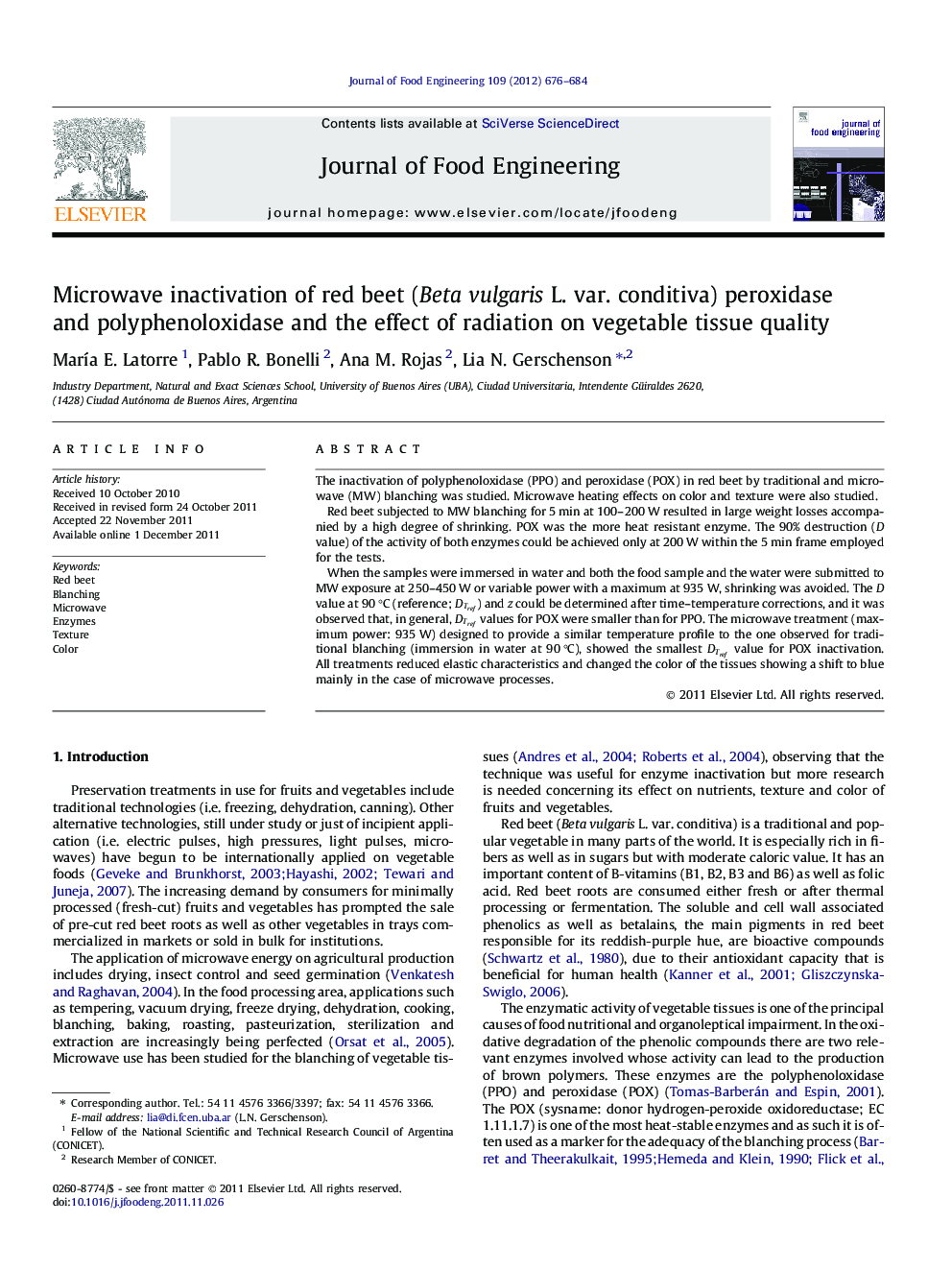| Article ID | Journal | Published Year | Pages | File Type |
|---|---|---|---|---|
| 223720 | Journal of Food Engineering | 2012 | 9 Pages |
The inactivation of polyphenoloxidase (PPO) and peroxidase (POX) in red beet by traditional and microwave (MW) blanching was studied. Microwave heating effects on color and texture were also studied.Red beet subjected to MW blanching for 5 min at 100–200 W resulted in large weight losses accompanied by a high degree of shrinking. POX was the more heat resistant enzyme. The 90% destruction (D value) of the activity of both enzymes could be achieved only at 200 W within the 5 min frame employed for the tests.When the samples were immersed in water and both the food sample and the water were submitted to MW exposure at 250–450 W or variable power with a maximum at 935 W, shrinking was avoided. The D value at 90 °C (reference; DTrefDTref) and z could be determined after time–temperature corrections, and it was observed that, in general, DTrefDTref values for POX were smaller than for PPO. The microwave treatment (maximum power: 935 W) designed to provide a similar temperature profile to the one observed for traditional blanching (immersion in water at 90 °C), showed the smallest DTrefDTref value for POX inactivation. All treatments reduced elastic characteristics and changed the color of the tissues showing a shift to blue mainly in the case of microwave processes.
► We studied traditional and microwave blanching for red beet. ► The kinetic parameters for polyphenoloxidase (PPO) and peroxidase (POX) inactivation could be determined. ► In general, PPO was more resistant and less sensitive to temperature than POX. ► Treatments reduced the elastic characteristics and changed the color of the tissues.
